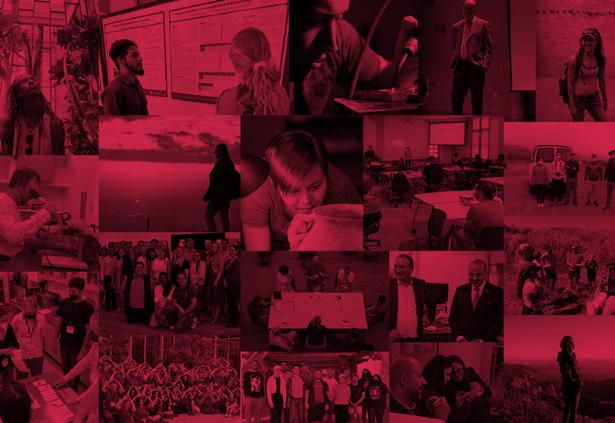




As the largest academic unit at The University of New Mexico, the College of Arts & Sciences is shaping the leaders of tomorrow. Our 24 departments and schools offer 70 undergraduate programs and 37 graduate and doctoral programs in the humanities, social sciences, and natural sciences. The diverse education that our students receive here empower them in their future careers – and beyond.

We take pride in the fact that The University of New Mexico is the state’s only Carnegie-designated Research 1 institution, indicating very high research activity. The College of Arts & Sciences is a major driver of these efforts thanks to the dedication of our faculty, staff, and students in positively impacting our communities here in New Mexico and throughout the world. This is precisely why WeR1 at the UNM College of Arts & Sciences.
From understanding the unique ecological landscape of our Bosque, to discovering new advancements in quantum computing, to working with our local communities in addressing social disparities, our students are taking control of their own education and doing so in collaboration with our faculty, who are leaders within their fields.
As you’ll see throughout this report, the state of New Mexico’s unique ecological and cultural landscape provides endless opportunities for advancing our research efforts.
It has truly been a pleasure serving as this special College’s interim dean and I am grateful to have worked alongside these incredible students, faculty, and staff who make us so unique. While I will be moving on to the University of Kansas on March 1, 2023, I have no doubt that our next interim dean, Janie Chermak, will continue to lead the College forward as the search for a permanent dean commences. Thank you for giving me this experience that I will treasure going forward.
We are individuals within our fields but together we are one College.
Warmly, Arash Mafi, PhD Interim Dean UNM College of Arts & Sciences
UNM College of Arts & Sciences

In 2022, six of the 11 total University of New Mexico students who were selected for this fellowship were current or former students of the College of Arts & Sciences. There were two recipients each from the Departments of Biology and Mathematics & Statistics; one from the Department of Anthropology; and one with a double major in Psychology and Anthropology.
Three College of Arts & Sciences students from the Departments of Biology and Physics & Astronomy also received Honorable Mentions.

Undergraduate research experiences are a key component to a student’s educational success and the College of Arts & Sciences has a long history in ensuring that these opportunities are available to our undergraduates.
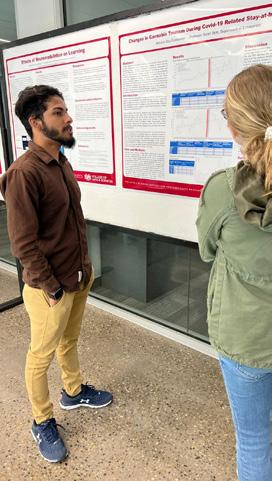

In the Fall of 2021 the College launched its newest undergraduate research initiative called the Arts & Sciences Support for Undergraduate Research Experience (ASSURE) program which is intended to nurture and promote research experiences through faculty/student relationships. The program supports these opportunities for undergraduate students through a $1,600 stiped during the semester-long collaboration.
Since its launch in the Fall of 2021, 57 students have benefitted from this unique research opportunity that's dedicated to fostering relationships and empowering the next generation of leaders in research.
In 2020, the Museum Research Traineeship (MRT) program, funded by the National Science Foundation, was initiated to provide an interdisciplinary museum science-focused education and research experience for graduate students at UNM. The program aims to educate, train, and provide opportunities for trainees to work with an intellectually and culturally diverse community of students, faculty, and partners to develop new ways to interpret and integrate museum objects and data into exciting scientific endeavors in scientific inquiry.
The MRT is in year three and has a total cohort of 21 trainees. The first cohort of 12 trainees launched in 2021, followed by the second cohort of nine, which started this Fall. Trainees are pursuing graduate degrees in anthropology, biology, geosciences, geography, and museum studies.
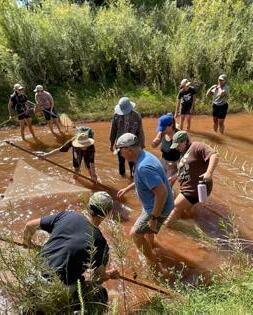
In addition to the MRT core curriculum, trainees attend professional conferences that provide cutting-edge technical sessions, outstanding professional education, and networking opportunities that broaden their knowledge and connect them to a broader diverse scientific community.
This year, MRT student Alex Apgar attended the 2022 Society of Vertebrate Paleontology and presented a poster, and Ceara Purcell participated at the Geological Society of America Connects 2022 conference. Tom Turner, program director, and Loretta Esquibel, program coordinator, also attended the 2022 NSF NRT Annual Conference and the Society for Advancement of Chicanos/Hispanics & Native Americans in Science (SACNAS) conference.
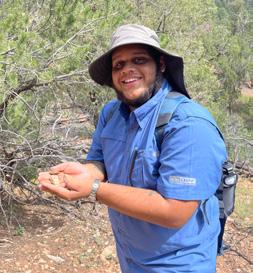
Ultimately the MRT aims to educate, train, and connect our trainees to professional opportunities to impact future research, education, and policy in academic, government, non-governmental, and private organizations. As the first cohort looks forward to 2023, those graduating with master's degrees will start pursuing their career goals. The MRT is excited to report that trainee Amanda Dobrov will begin working as an archaeological technician with the Cibola National Forest.
For more information on the MRT, go to MRT.UNM.EDU.
To play TreeSim or learn more about the Interdisciplinary Science Cooperative's initiatives, go to:
ISCO-OP.UNM.EDU
Thanks to a generous gift from School of Engineering alumnus, Roger Jones, PhD, and his wife, Teri, undergraduate students from various majors are getting a unique opportunity to leverage their own disciplinary backgrounds in educating the public about water resource issues in the Rio Grande.

Guided by a graduate student mentor from the Water Resources program, students from the Interdisciplinary Science Cooperative’s Undergraduate Fellowship in Water Management are developing a game simulation model that will serve as an interactive educational tool – and a call to action in protecting our watershed.
In its initial development, TreeSim integrates the civil engineering, environmental science, population health, political science, biology, and geography backgrounds of the fellowship’s first three cohorts of students. The simulation is designed specifically for the Albuquerque area with the overall intent of promoting green spaces by planting trees using stormwater discharge that is not being actively used.
The Jones were particularly drawn to using an interdisciplinary approach for tackling this issue because of the diversity of stakeholders, stating, “The solution to this problem in New Mexico will provide a template for solving the problem on a global scale.”
The public is invited to assist this year’s cohort of fellows in developing TreeSim by playing it and providing feedback over the course of this next year.
This input will be gathered and provided to our students at the beginning of Summer 2023 when they begin developing TreeSim further. Your feedback will be vital in shaping this project’s goal of addressing the issues affecting our community’s most precious resource.
“The solution to this problem in New Mexico will provide a template for solving the problem on a global scale.”
The Department of Speech & Hearing Sciences has a strong focus on cultural and linguistic diversity as well as numerous specialization areas. Launched in 2022, their new doctoral program will offer students the opportunity to develop both clinical research and teaching skills that will position them to compete for top academic and professional jobs.
Based on a foundation that focuses on preparing graduates to excel in academic faculty positions, it addresses a significant need within the field. According to the American Speech-Language-Hearing Association, 30% of academic faculty positions in the communication sciences went unfulfilled in 2021.
The first student accepted into the new PhD program is Naomi Nattress, who is also a practicing speech-language pathologist. Before entering the program, Naomi specialized in working with children who have multiple and/ or visual impairments (MI/VI).

She is now working with her mentor, Professor Cathy Binger, in the augmentative and alternative communication (AAC) lab, where they create beneficial and constructive approaches to aid children with significant communication disorders while collaborating with their families.
These AAC methods include technologies such as communication apps on mobile devices (such as iPads) that, in many cases, are easily understood by the children and enable them to communicate more effectively.
Nattress decided to pursue her PhD at the University of New Mexico where, as she says, she can “expand the current intervention research base to help these children be more successful communicators and increase their participation across all areas of their lives.”
For more information on the program, go to SHS.UNM.EDU.
“It is a beautiful mix of science, a helping profession, and the intricacies of speech and language.”
- Naomi Nattress (PhD candidate, Speech & Hearing Sciences)NAOMI NATTRESS

A substantial grant from the National Institutes of Health (NIH) will boost inclusive excellence efforts at The University of New Mexico and support the hiring of nine diverse faculty in biomedical research in the College of Arts & Sciences.
The $15.6 million, five-year award to the University is part of the NIH Common Fund’s Faculty Institutional Recruitment for Sustainable Transformation (FIRST) program. UNM is one of five universities that received this award.
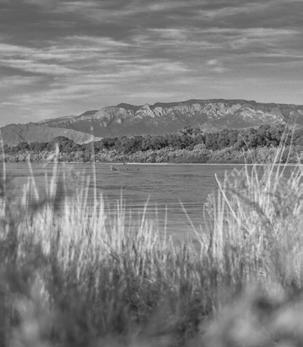
“Through the FIRST program, these awardee institutions will build self-reinforcing communities of scientists committed to diversity and inclusive excellence through recruitment of early-career faculty who are competitive for Assistant Professor (or equivalent) positions and have a demonstrated commitment to promoting diversity and inclusive excellence,” according to an announcement from NIH.
“The institutions aim to foster sustainable institutional culture change and positively impact faculty development, retention, progression, and eventual promotion,” the announcement said.
Here at UNM, an all-female, interdisciplinary team of scientists from a variety of STEM fields will work closely with administrators from the College of Arts & Sciences on the hires and will focus on retaining and supporting current faculty.
UNM FIRST specifically aims to promote sustained inclusive excellence through the hiring of a diverse cohort of early-career faculty in the areas of neuroscience and data science.
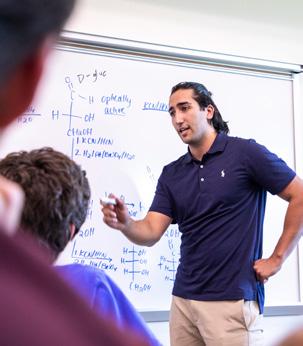
A $2 million grant from the Mellon Foundation will support students in the Humanities at Central New Mexico Community College and UNM branch campuses in transferring to the UNM main campus in Albuquerque. The program is led by professor and chair of Chicana & Chicano Studies and the director of the Southwest Hispanic Research Institute, Irene Vasquez. This is a major achievement for Humanities programs at UNM, which often lack large grant opportunities such as this Mellon grant.
Vasquez said, “My campus partners and I are celebrating the success of having received the Mellon grant because it will expand the constellation of Humanities learning opportunities that honor our students, the places they come from, their diverse cultural traditions, and the resiliency of people in the face of challenging circumstances or societal shifts.”
The hires will occur over the next two years and will include two faculty members each in the departments of Biology, Chemistry & Chemical Biology, and Psychology and one hire each in the departments of Mathematics & Statistics, Physics & Astronomy, and Speech & Hearing Sciences.
For more information, go to UNMFIRST.UNM.EDU
UNM will receive $2 million over the course of three years to increase Humanities Bachelor of Arts degree earners at UNM, a Hispanic-Serving Research Institution.
The grant will support students and faculty engaged in Humanities exploration, professional development, curriculum, and research. Graduate students will teach Humanities courses at branch campuses where Humanities offerings are currently limited. UNM faculty and graduate students will mentor community college students throughout the state.
“A diverse faculty generates more ideas and better ideas.”
-- James Holloway, UNM Provost
New Mexico’s longstanding history of being on the forefront of quantum computing has now brought together some of the greatest leaders in the field to propel us into the Second Quantum Revolution.


Quantum New Mexico (QNM), an initiative between The University of New Mexico, Sandia National Laboratories, and other partners, has officially launched a coalition of some of the greatest powerhouses in the state to advance research, education, workforce and economic development -- and establish New Mexico as a Quantum State.
To inaugurate this effort, UNM hosted a two-day hybrid symposium from March 31 to April 1, 2022. Senator Martin Heinrich, a longtime champion of Quantum Information Science (QIS), delivered the keynote address, saying, "from research and development, all the way to commercialization, and larger-scale manufacturing…if we can all work together, and bring all of our resources to bear, I am confident that we can make New Mexico the best place for Quantum Science.”
A first step in the QNM initiative is the establishment of the Quantum New Mexico Institute (QNM-I) which will advance research, education, and workforce development in the state. UNM, in partnership with Sandia and Los Alamos National Laboratories, has educated over 30 of today’s Quantum leaders in academia, industry, and think tanks. With QNM-I, the opportunities for future leaders in the field will grow exponentially.

“This new Quantum New Mexico partnership will be an essential ingredient in helping good ideas get their start in New Mexico."
-- Senator Martin HeinrichSENATOR MARTIN HEINRICH IVAN DEUTSCH, director, CQuIC RICK MULLER, Sandia National Laboratories
In its second year at UNM, the Research Opportunities for Science Educators (ROSE) program, in partnership with the New Mexico Public Education Department (PED), brought 20 science educators (or “Scholars” as they are referred to in the program) throughout the state of New Mexico to UNM’s campus from June 6th –July 8th.
Through this five-week immersive experience, Scholars are given the opportunity to work in UNM’s state-of-the-art facilities in order to gain hands-on experience in current scientific research.
By matching them with an existing research group at UNM, Scholars are given the opportunity to advance research outcomes on campus while simultaneously providing them with a wealth of knowledge that they can take back to their classrooms to educate the next generation of STEM leaders.
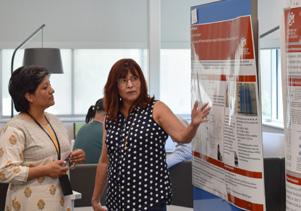
Scholars are selected from middle and high schools with high enrollments of underrepresented minority students. In 2022, they represented multiple communities across the state including Zuni, Crown Point, Cuba, Raton, Clovis, Ruidoso, Las Cruces, Deming, and the Albuquerque metro area.
Inez Jacobs from Mark Armijo Academy attended the ROSE program in its first year at UNM in 2021 and enjoyed the experience so much that she came back again this year.
She says, “This lesson and this experience are valuable in educating students on experimental design. Which tools to use? What information will you get? Which questions will you answer? I thoroughly enjoyed my time with the phenomenal team in [Assistant Professor] Mark Walker's lab.”
Co-organizer, Professor Jeffrey Rack expressed his appreciation for the New Mexico PED's support of the program by saying, “We are grateful to our colleagues at the NM PED...for their strong support of this program. Without them, this valuable program never would have happened.”
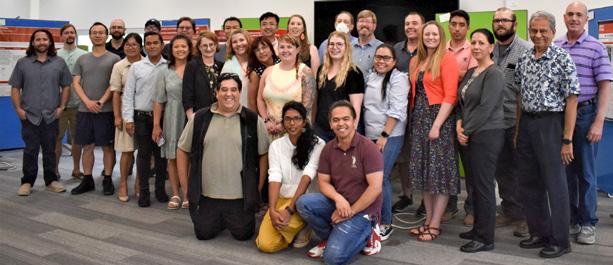

At the UNM College of Arts & Sciences, our communities are at the heart of our research efforts. To support community-based research projects, The Center for Regional Studies partnered with the College to financially support community-based research

While the Criminal Legal System (CLS) is responsible for public safety and works to uphold the values of the law, there is still an abundance of ways in which their methods can be improved. One common feature of the CLS is its overreliance on punitive practices that create negative interactions with the public, leading to increased social stigma, as well as other long-term outcomes that link the CLS with persistent inequality and socioeconomic disadvantage.
One possible response is the use of non-traditional diversion or deflection practices. Diversion is intended to minimize CLS involvement and its consequences for clients while holding them accountable. Painter-Davis, an associate professor in the Department of Sociology and investigator for UNM’s Center on Alcohol, Substance Use, and Addictions (CASAA), is working with an interdisciplinary team of faculty, students, and community partners to help New Mexico’s First Judicial District improve and develop diversion practices that address the social and contextual issues that often trap individuals in the CLS.
The team includes the First District Attorney’s Office, New Mexico Sentencing Commission, CASAA, and various UNM academic departments, including Sociology and Criminology, Psychology, Public Health, Economics, and the newly developing Forensic Psychology department. Lisa Broidy, Distinguished Professor and Chair of the Sociology Department, is a Co-investigator on the project.
The ongoing development of the project is focused on reducing contact and reliance on the CLS; enhancing the overall well-being of juveniles and young adults; reducing inequalities; and improving policy. The team is working with the First District Attorney’s office to identify what current diversion practices are working and how they can be improved.
projects focused on New Mexican or Southwestern communities. Two projects were selected for the Community-Based Research Initiative, which will receive $30,000 per year for up to two years.
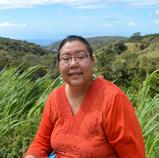
“Child speakers are foundational to sustaining and maintaining languages,” says Melvatha Chee, assistant professor of Linguisitcs, “The opportunity to document child language to understand the acquisition process is quickly disappearing.”
Within the Navajo community, there is a dwindling number of monolingual speakers, which are a majority of elders.

To address this, Chee and her team have launched a 10-month study that will specifically focus on child-directed speech and how children acquire the language from these interactions.
“In the acquisition of a language, the pre-word stage is an important milestone,” Chee said.
Group interactions between caretakers and children both directly and indirectly will be observed through video recordings of caretakers communicating in the Navajo language with children.
From here, Chee and her team will look at what the child-directed speech input looks like; for example if adults use full verbs or what words are used most when communicating with children. A database of will then be developed.
The research will be conducted in the new Saad K’idilyé Diné Language Nest in Albuquerque that opened in August 2022. It is a full immersion center that only uses Navajo, which is grounded in Diné way of knowing and being
The findings of the study will be presented to Saad K’idilyé first before sharing with the broader community. Chee hopes to help revitalize the Navajo language amongst the youngest generations in hopes of filling gaps for both academia and her community.
One of UNM’s many historical buildings has been given new life again – and it will serve as an educational resource to future scientists throughout our state.
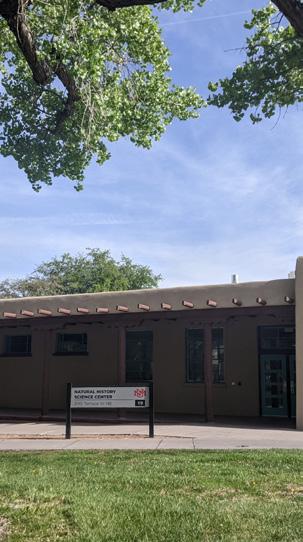
Situated at the southern edge of main campus, the Natural History Science Center (NHSC) is a collaborative space dedicated to introducing and researching the rich history of our Earth. Dedicated to interdisciplinary specimen-based research, this new addition to the campus will serve as a research and educational resource for New Mexico and beyond.
Prior to the establishment of the NHSC, the unique regional paleontology collection housed in Northrop Hall was in danger of deterioration due to unstable climate conditions.
This fossil collection is of great significance to the Southwest, as there are over 40 type specimens. Many of these are not found outside of UNM – not even in the Smithsonian. Preserving these specimens was of the utmost importance and a new, climate-controlled space was desperately needed.
With the new building, this vast collection will not only be preserved but will also support the eventual goal for this space: to become designated as a Federal repository for all types of fossil specimens.
As Albuquerque's first public museum and the only museum in New Mexico with an exhibit on human evolution, the Maxwell Museum of Anthropology honors the fullness of human experiences in the Southwest and the world.

The Museum of Biology (MSB) finest university-based natural history nationwide. The the national and scientific community providing an extensive informatics resource biodiversity.

Designation as a Federal repository would enable fossils collected under permit in collaboration with Native and other public lands to be preserved in the NHSC in perpetuity for the American people.
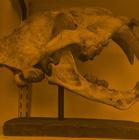
From its inception, the NHSC was designed with interdisciplinary education and outreach in mind. This vision has resulted in one half of the space designed to engage students from multiple disciplines as well as the community in the value of research specimens as unique repositories of knowledge about the history and continuation of life on our planet.
With a prep lab, photography and analytical space, and a large collections room, students and researchers will have a place to prepare, study, and maintain fossils right here on campus. A monitor outside of the prep lab will even give visitors an up-close look at what researchers are viewing on their microscopes.
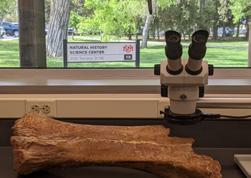
The NHSC stands to become a true focal point for The University and future scientists everywhere. Said Associate Professor of Earth & Planetary Sciences, Cori Myers, “Geoscience departments all over the country are shuttering their paleontological research and giving away their specimens. UNM is actively bucking this trend and not only supporting, but expanding resources for paleontological research."
of Southwestern is one of the university-based museums
The MSB serves and international community by extensive resource on

The Meteorite Museum is a major educational resource for The University and New Mexico schools. The meteorites on display in the museum are only a small part of the research and teaching collection, which includes over 5000 specimens of over 650 samples.
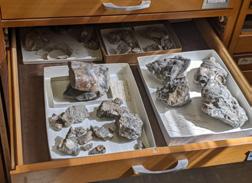
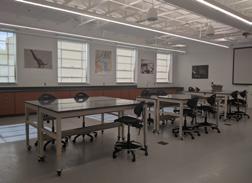
“This will contribute to UNM becoming a national center for paleontology in the future."
For the past 50 years, the Africana Studies program at UNM has provided students from all backgrounds with a full understanding of the experiences shared by African-descended people. This year, Africana Studies officially became a department at the College of Arts & Sciences with the goal of launching a Masters program, and eventually, a PhD program.
Africana Studies Chair, Kirsten Pai Buick, says, "The department’s guiding principles will continue to ensure that students of all races, ethnicities, and backgrounds have access to a full understanding of the global linkages between peoples of Africa and other African-descended people throughout the Black diaspora. "We recognize and honor the importance of cross-fertilization, interconnectedness, and intersectionality in the framing of African Diaspora history as a vital constituent of all histories.”

Native American Studies launched its first PhD program this year, which was five years in the making and is the fourth of its kind in the country. With a focus on the areas of critical Indigenous thought, sustainable community building, and comparative studies in Indigenous government, policy, identity, and sustainability, the goal is to create the necessary foundations critical to becoming a leader for Indigenous communities.
Students will gain advanced research skills and use them to uncover the critical tools for community building and cultural thriving. The first cohort will start in Fall 2023.
The Department of Economics hosted its first-ever New Mexico Economics Research Day highlighted by the presentation of four policy projects related to the well-being of the New Mexico state economy.
The conference was made possible in part through the support of the New Mexico Legislature which allocated $125,000 last spring as part of the 2022 SB 377, Junior Appropriations bill, to conduct New Mexico-centric economics research. From the appropriation, the Economics Department funded four policy projects which were presented as part of the research day.
The four policy projects included:
New Mexico Prekindergarten and its Short-Term Effects on County-Level Female Employment and Child Maltreatment
Ozone Pollution in New Mexico: An Economic Analysis of its Human Health Impacts and Damages

Effects of Cannabis Home Cultivation on Residential Water Use in New Mexico
Alcohol Regulation and Excise Taxes in New Mexico
Thanks to the support of the New Mexico State Legislature and Governor, our research and education efforts throughout the College of Arts & Sciences have grown exponentially over the past year.
What began as a one-time class promoting community building through service has since bloomed into a regular course that is making real positive change throughout our community.
Lobo Gardens, a collaboration between UNM's Research Service Learning Program, the Office of Sustainability, Sustainability Studies, and University Studies is not only providing outdoor laboratories for our students but addressing food insecurity throughout our Lobo community.
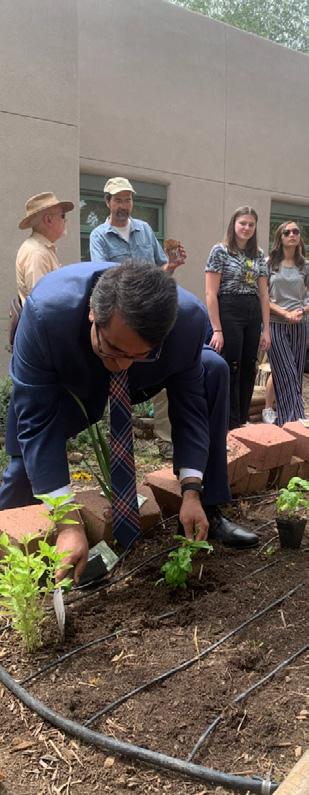
While the main goal of Lobo Gardens is to learn about agriculture through community service, the food grown in the campus gardens supports UNM's Lobo Food Pantry, as well as our external community.
In 2020, several faculty throughout campus, including Geography & Environmental Studies' Marygold Walsh-Dilley, came together to launch the Basic Needs Project, which is dedicated to improving the food and housing insecurity experiences by UNM students. The team is now one of UNM's Grand Challenges Level One concept teams
Their research found that between one fourth and one third of UNM students are food insecure. Many have limited or uncertain access to nutritionally adequate food. Around 15% of students experience very low food insecurity, meaning that they experienced hunger sometime in the past month.
In 2014, the Lobo Food Pantry was established as a mobile resource for students to access food and other essentials at no cost thanks to the generosity of the Road Runner Food Bank. In 2021, the Lobo Food Pantry was moved to an improved space in the basement of the SUB, where it is now open four days a week for students to access healthy food options.
To make a gift, go to UNMFUND.ORG

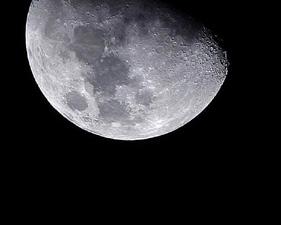
Since the Apollo era, all samples that were returned to Earth have been carefully stored in the laboratory to preserve them for future generations. Most samples have been well studied, and many are the subject of ongoing research. However, NASA also made the decision to keep some samples completely untouched as an investment in the future, allowing them to be analyzed with more advanced technologies as they are developed.
These include samples that represent the “crown jewels” of the United States and its space exploration program. UNM's Center for Stable Isotopes (CSI) was selected as one of a few labs throughout the country to be the first to open these samples from the Apollo 17 mission.
The sealed tube has been carefully stored in a protective outer vacuum tube and in an atmosphere-controlled environment at Johnson ever since. The core has been carefully stored at NASA’s Johnson Space Center in Houston, Texas, since December 1972.
CSI Director, Zach Sharp, said, “The important thing we're going to do is to measure the hydrogen,” said Sharp. “Hydrogen is the closest thing you get to water, so I would say of all the analyses that we can make this is arguably the most important, especially if people are talking about going to the moon and colonizing it someday. Water is critical and they're going to get it from the moon."

For two weeks over the summer, students throughout the world have the opportunity to learn from one another at one of the largest stable isotope facilities in the country. In its second year at UNM, the Center for Stable Isotopes (CSI) hosted 54 students in 2022 for IsoCamp, a hands-on training course in the application of stable isotopes to the biological, anthropological, and geological sciences.
It is this diversity that allows students to develop their own career paths by learning from one another as well as leaders within the field. As a world-renowned course, students come from throughout the globe, and this year was no exception. Attendees represented 14 separate home countries, and out of the 54 students who attended both in-person and virtually, 10 identified as Hispanic/Latino(a), five as Asian, four as black/African-American, and one as American Indian or Alaska Native.

Launched at the University of Utah in 1996, IsoCamp made its new home at UNM in 2021 when the course’s organizers, Jim Ehrlinger and Thure Cerling, saw the opportunity for this special program to thrive under CSI’s leadership – and New Mexico’s diverse ecological landscape. Over the course of the two weeks, students were not only able to receive hands-on learning in a state-of-the-art facility, but got to do so in a locale with endless options for sample collection in the nearby Rio Grande Bosque and Sandia Mountains.
IsoCamp provides early stage graduate students with the opportunity to gain a deeper understanding of the practical applications in the study of stable isotopes. This is done through lectures, field work, and laboratory-based experiences that culminate in a final project presentation at the end of the course. These experiences are taught by some of the leading experts in their fields, and this year CSI invited 23 lecturers representing 13 institutions, including Yale University, Cornell University, UC Berkeley, and the U.S. Environmental Protection Agency.
To learn more about this project and the impact it is making on our understanding of fault lines such as the Queen Charlotte, go to:
One of the world’s most seismically-active faults has produced six earthquakes with a magnitude of seven or greater in the last century alone – yet very little is known about it. Regents’ Lecturer, Lindsay Lowe Worthington, and her team have set out to learn more about the mysterious Queen Charlotte fault, which sits under the ocean off the coast of Alaska, and their research has now made it one of the best-imaged faults in the world.
As the first comprehensive study of its kind to image this plate boundary which stretches approximately 560 miles, Worthington and her colleagues from Western Washington University and Dalhousie University in Canada, are spending weeks at a time on a ship to collect data that will help them predict future earthquakes and tsunamis in the area, as well as provide data to understand similar fault lines such as the San Andreas Fault in California.
“Our goal is to characterize the structure and tectonic framework of the area to further understand current deformation, seismicity and hazards along the fault. For such an active plate boundary, so little is known about the structure— we are definitely charting new territory!”
As the chief scientist on the ship, Worthington is leading a team, or “science party” as they’re
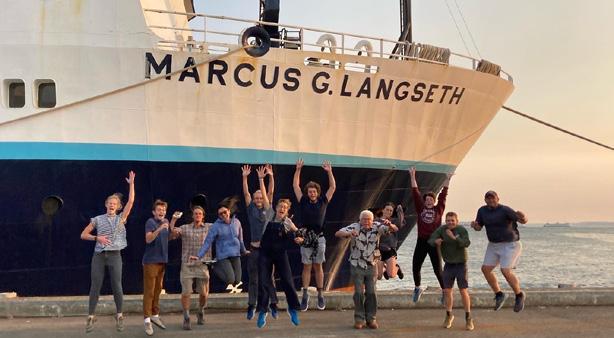
“Working on the R.V. Marcus G. Langseth must be the most rewarding experience of my Ph.D. studies here at UNM."
- Olumide ‘Olu’ Adedeji (PhD Candidate, Earth & Planetary Sciences)
referred to on the ship, of approximately 25 scientists and future scientists at a time for weekslong expeditions to gather data. Six graduate students had the opportunity to experience this field work opportunity of a lifetime, with two of them being from UNM.

PhD candidate in Earth & Planetary Sciences, Olumide ‘Olu’ Adedeji, noted, "The privilege to work with highly trained specialists and crew members aboard the vessel helped me to understand the importance of multilateral collaboration in the pursuit of a groundbreaking goals.”
After several setbacks due to the pandemic, they were finally able to set out on their first trip on July 17, 2021 aboard two ships: the Marcus G. Langseth, a research ship operated by Columbia University and the National Science Foundation; and a Canadian Coast Guard Vessel, the John P. Tully.
After several setbacks due to the pandemic, they were able to set out on their first trip on July 17, 2021 aboard two ships: the Marcus G. Langseth, a research ship operated by Columbia University and the National Science Foundation; and a Canadian Coast Guard Vessel, the John P. Tully.
For the next 40 days, scientists aboard the Tully

deployed ocean bottom seismometers (OBS) to the sea floor that were able to track the sound source from airguns strung behind the Langseth. Air bubbles produce sound waves from these streamers, enabling the scientists to create detailed images of the fault line. Additional equipment within the streamers traced the Earth’s crust.
Weeks at sea involve long days which can often be interrupted by the wildlife surrounding them. In accordance with international, Federal, and state protocols, the team ceased operations when sea life was detected in the area to ensure that they were not harmed by the equipment.
From here, the team will analyze the data they’ve recovered over the next few months in preparation for the next phase of their project which will be communicating the data to the communities surrounding the fault line. This outreach will begin in the Summer of 2023 to enable these communities to implement better hazard assessment and earthquake protocols.
“We are happily up to our ears in data and are working hard to produce new images of the fault that will be important for understanding earthquake behavior and the overall tectonic framework of much of the northwestern North American continent.”
For more information about the McMurdo Dry Valleys LTER, go to MCM.LTERNET.EDU

“We're all there to contribute to the same idea - that scientific research is important enough to live in a nearly inhospitable environment for the sake of learning about the environment itself."
- Caitlin Wolf, BS (Biology, 2015)
For the past 30 years, scientists at UNM and throughout the world have been conducting a large-scale ecological study of the coldest place on Earth in order to understand how life exists in inhospitable environments, and how climate change is affecting their survival.

The work being done at the McMurdo Dry Valleys Long-term Ecological Research (LTER) project in Antarctica is not only improving our understanding of this unique ecosystem but providing a blueprint for identifying the effects of past and present climate change throughout the world.
Based at the National Science Foundation’s McMurdo Station, and one of 28 LTER sites, the Dry Valley’s LTER is studying the largest ice-free area on the continent. Between the wide areas of open soil are stream channels that connect glaciers to permanently ice-covered lakes. In this environment, researchers must work in temperatures that range from freezing to less than -40°F.
Despite the bitterly cold temperatures, however, there is an ecosystem of microorganisms, mosses, lichens, and a small group of invertebrates. The streams and lakes in which they live respond to changes in the environment immediately, making this desolate area a prime spot for learning more about the effects that these changes have on the environment as a whole.
Professor of Biology, Cristina Takacs-Vesbach, has been a co-principal investigator (PI) on this project since 2011 but her involvement in it goes back to its beginning when she was a graduate student at Montana State University. As members of the McMurdo LTER, Takacs-Vesbach and assistant professor of Earth & Planetary Sciences, Tyler Mackey, are part of a
team of over 200 people that include researchers with various expertise, postdoctoral fellows, undergraduate and graduate students, and multiple collaborators.
Says Takacs-Vesbach of the team, “the most rewarding aspect has been the relationships I have with my collaborators. Many of us have known each other for 30 years and worked very closely together in the field...and we have gone through many of life’s milestones together.”
These relationships have bolstered some significant discoveries over the past 30 years. One of these is the effects of cooling and subsequent warming in the Dry Valleys that occurred between 1986 and 2002. Within this timeline, researchers have a post-flood period that nearly matches the pre-flood period. The post-flood record shows that ecosystem responses were either stalled or reversed in comparison to the pre-flood period.
Emily Reynebeau, a PhD candidate in Biology, is one of the 31 researchers who traveled to McMurdo this season. Reynebeau is part of a team that is studying the chemical and biological aspects of the lakes.
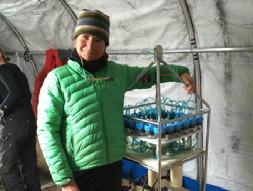
“The lakes of the Valleys are very special, and unlike other lakes in the world." says Reynebeau, "The permanent ice prevents seasonal turnover, as seen in most lakes, creating very distinctly stratified layers in the water. The biological, chemical, and physical features of each lake are totally different meter to meter.”
Caitlin Wolf (Biology, 2015) reflected on her own experience getting to conduct research in the McMurdo Dry Valleys as a student by saying, “I'm very thankful I was given the opportunity to explore such an interesting place so early in my career.”


Chavez Lamar leads the National Museum of the Native American Indian which fosters a richer shared human experience through a more informed understanding of Native peoples. She is an enrolled member at San Felipe Pueblo. and her ancestry also includes Hopi, Tewa and Navajo on the maternal side of her family.
“UNM laid the academic foundation for my interest in collaborative methodologies and Native art,” Chavez Lamar said. “I was introduced to museum anthropology by way of a course I took with the late Dr. Mari Lyn Salvador. I was inspired by the collaborative work she did with the Guna of Panama. I also benefited from majoring in American Studies. Its interdisciplinary focus allowed me to combine my research interests in Native Art, cultural anthropology, and Native American Studies while pursing my doctorate.”
The Association for Computing Machinery (ACM) named Jack J. Dongarra as the recipient of the 2021 ACM A.M. Turing Award – often referred to as the “Nobel Prize of computing.”
His research was foundational to the field of computer science at UNM and in particular, high-performance computing. The ACM credited Dongarra with “pioneering contributions to numerical algorithms and libraries that enabled high-performance computational software to keep pace with exponential hardware improvements for over four decades.”
“Albuquerque, the campus, and the mountains will always have a special place in my heart,” Dongarra said.
Dongarra is now a Distinguished Professor at the University of Tennessee in the Departments of Electrical Engineering and Computer Science.
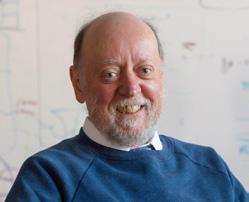
Secretary Haaland made history in 2021 with her confirmation as Secretary of the Interior. She is the first Native American to serve in this role.

Secretary Haaland leads the federal agency that oversees nearly 500 million acres of surface land - a majority of the nation’s public lands, waterways, wildlife preserves, national parks and mineral wealth – a role that has tremendous significance for the 574 federally recognized tribes.
The congresswoman is a 35th generation New Mexican and an enrolled member of the Pueblo of Laguna, and also has Jemez Pueblo heritage. The proud UNM alumna graduated from the University in 1994 with a degree in Eglish Language & Literature and went on to graduate from UNM School of Law in 2006.
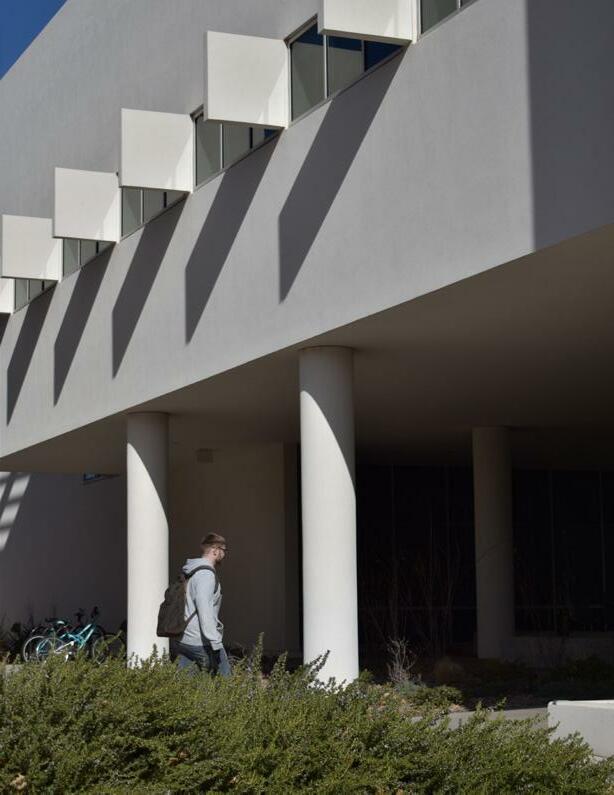
Your support ensures that our students have the opportunity to take full advantage of their academic experience here at the UNM College of Arts & Sciences. Today’s workforce needs leaders who can meet the demands of our ever-changing society, and the College is actively working to ensure that our students are equipped to meet these needs.
Our future Lobos are also New Mexico’s future.
Advance at UNM Talullah Begaye Hyunju Blumel Salome Borrego-Marsh Steve Carr
Loretta Esquibel Breanna Kappel Mary Beth King Mark Aria Photography Savannah Peat Karen Roberts Geneva Sandoval-Dinallo Caitlin Wolf
Cover Photo: Jacque Kocer PhD Candidate, Anthropology
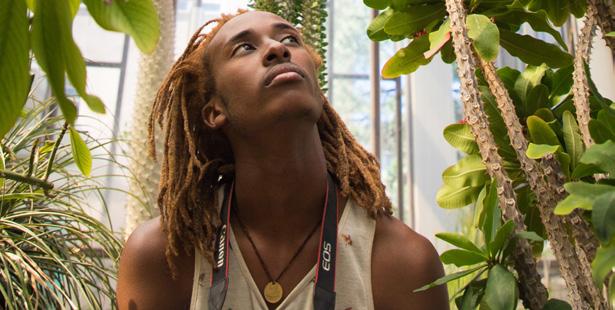
Learn more about Jacque at ASRESEARCH.UNM.EDU
Irene Gray, MPA
PUBLISHED
UNM College of Arts & Sciences Office of Research
